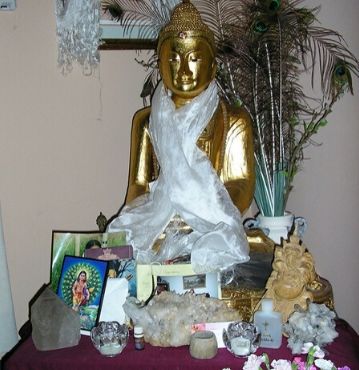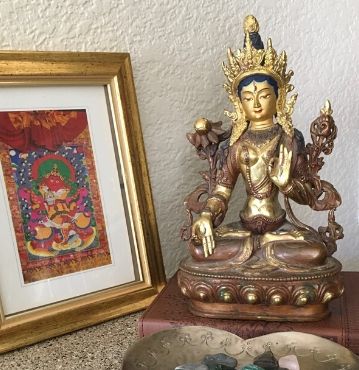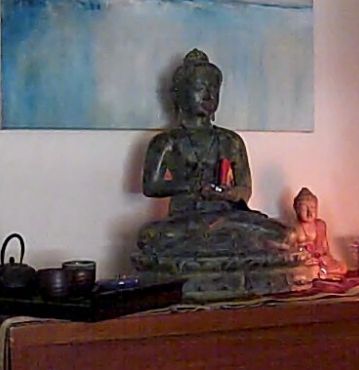The history of the altar began in ancient Rome to appease their gods. Early religions used them for sacrifices and offerings to the gods. A display of altars is all around us, Stonehenge, for example, is an open-air shrine, and Machu Picchu was built in a high place so they would be closer to the heavens. The Balinese build altars everywhere and pay daily homage to the gods for everything, to keep themselves safe and for special occasions. Offerings are made of plants and incense, and prayers become dedicated to the local gods and grace many different aspects of the community. The belief is the gods love the sweet fragrances of flowers.
Altars are prominent in family homes and adorned with personal household ideals that represent their current religion. Other objects often included are fruit, bread, milk, and flowers—all objects the gods like.
Your Altar
Creating an altar connects the physical and spiritual world. It is a place to set intentions, pay homage, and meditate. Altars grow and change with you, and a home shrine keeps intentions alive and you present. It’s a place to connect daily.
Location
Select a place convenient for you but not in the line of household traffic or near open windows or doorways. Look for spots near corners to align them with your house’s Feng Shui. Look for places in your bedroom, meditation room, or office. Where is that sacred place in your home?
Altar Items
The first item on your altar is a picture of you. Your altar connects you to the Divine and your inner wisdom. Next, locate items of endearment. Let your internal wisdom guide you to objects, photos, images, etc., that are important. For example, crystals, flowers, coins, pictures of places you travel to, and things you might want to acquire (like a picture of a house, pets, or relationships) strategically place these items on the altar.
You can include
- Images of Buddha
- Pictures of gurus
- Written intentions
- Pictures of parents, spouses or children
Intention
Now set the energy of your altar. Declare and write positive intentions. Create Sacred Space by declaring the Space: this is MY SACRED SPACE. Your home altar is a personal power spot where you can continue to grow and deepen your relationship with the Divine Self. Ask yourself, “If this altar could be about anything, what would it be about?”
Connecting to Nature – The Elements/Calling in the Directions
Because an altar represents your connection to nature and the Divine, there will be representations of the elements—air, fire, water, earth, and Spirit. You can represent all the elements or just a few, depending on the nature of your altar.
- Air: Incense
- Fire: Candle
- Water: Vase, bowl
- Earth: Flower, Silver
- Spirit: Images or objects that represent Spirit for you
Keep the Magic Alive
Cleaning your altar is like recharging the battery on your cell phone. Letting your altar come into the present tense makes it ALIVE, which is what it is all about.
- Dust and wipe the area around your altar under it too.
- Change the fabric
- Pick fresh flowers and use clean water for the vase
- Maybe use a new candle that is a different color than you usually choose
Curated Altars
Place objects and images that feel current. Start with the question: “What wants to be on my altar?”
KumariDevi Altars





